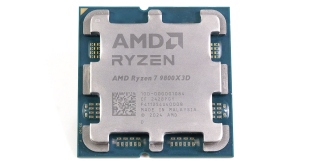At KitGuru, we're always playing the ‘old geezer' card, using our grey hair and pot-bellies to bring back factoids from yesteryear. That means we can remember a time when current Asus board-level executives were driving up and down the UK countryside – working hard to generate any mainboard orders they could find. At the end of 2012, the situation is remarkably different. KitGuru gets the inside track on Asus' current standing.
In any organisation, losing key personnel can have an impact on your ability to compete. However, despite losing people in 2012, Asus seems to have managed ‘top spot' – in terms of market share – in many different sectors.
While waiting for the official figures to filter their way through, KitGuru has done some investigating and it seems that Asus is now number one, overall, for both graphic card shipments and mainboard sales into the UK. We are still waiting to hear if that means ‘Number one for nVidia and AMD on graphics – as well as number one for Intel and AMD on mainboards', but that is the kind of level where Asus is batting these days.
At the start of the year, we knew that there had been a lot of personnel changes – especially around sales. That kind of thing can have quite a serious impact on a company's ability to deliver. It says something about Asus as a company that they could lose UK Sales Manager Michael Buchanan, one of the best sales people in the industry (who went to Corsair), and yet still power forward and nail top spot.
But what about the other companies in this market?
The challenge for Asus' competitors is two-fold.
First, the more product you sell for a manufacturer (like nVidia, AMD or Intel), the more marketing funds they will make available – so success can create a ‘self fulfilling prophesy'. In other words, by achieving number on spot, Asus will be in position to increase its brand awareness further.
Second, Asus has long been tagged as ‘a company that wants its brand to be more like Sony'. In order words, to have mainstream appeal into a much wider audience. The launch of the EeePC/netbook launched Asus into the wider consciousness – and this year we saw a lot of mainstream technology/gadget awards going Asus' way – for example the T3 Gadget Awards Design win for the Transformer. Mainstream means greater brand recognition in the high street and should, long term, increase sales even more in the overall electronics marketplace.
The re-invention of Asus as a consumer brand, means that it can put a distance between itself and, say, Intel – where so much of the annual figure relies on traditional/shrinking markets. Asus is looking to position itself as a ‘technology company' and carry on growing.
Will Asus manage to post more then $15 billion in revenue for 2012? We're still waiting on final numbers, but anything over $15 billion must be seen as a huge success for a company that does not really sell on price – competing in a price-driven market.

.
KitGuru Says: Difficult choices ahead for companies competing against Asus. Should they look to reduce their cost base in order to make products that are more competitive – albeit with lower profits – or stand toe to toe with the Taiwanese giant and win on a combination of engineering and marketing? Tough call.
Comment below or in the KitGuru forums.
 KitGuru KitGuru.net – Tech News | Hardware News | Hardware Reviews | IOS | Mobile | Gaming | Graphics Cards
KitGuru KitGuru.net – Tech News | Hardware News | Hardware Reviews | IOS | Mobile | Gaming | Graphics Cards


